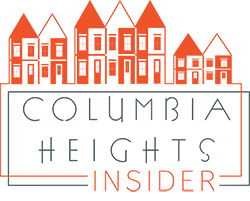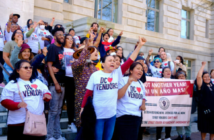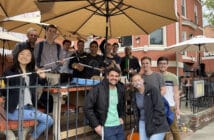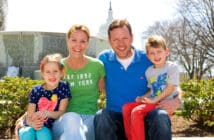If you’ve risked a mask wearing, social distanced tour of DC in recent weeks then you’ve likely recognized some artistic changes to buildings and streets in the city. The new Black Lives Matter mural painted in bold yellow across the pavement of 16th Street welcomes visitors to the White House every day, and murals on plywood replace many storefront windows across the District.
The Columbia Heights community, influenced by the social justice artistic atmosphere, has welcomed a new mural on the wall of Panam Grocery. The mural centers the story of Vanessa Guillén and I sat down for a Zoom interview with the lead artists, Musah Swallah and Frida Larios, to discuss how they conceptualized the project.
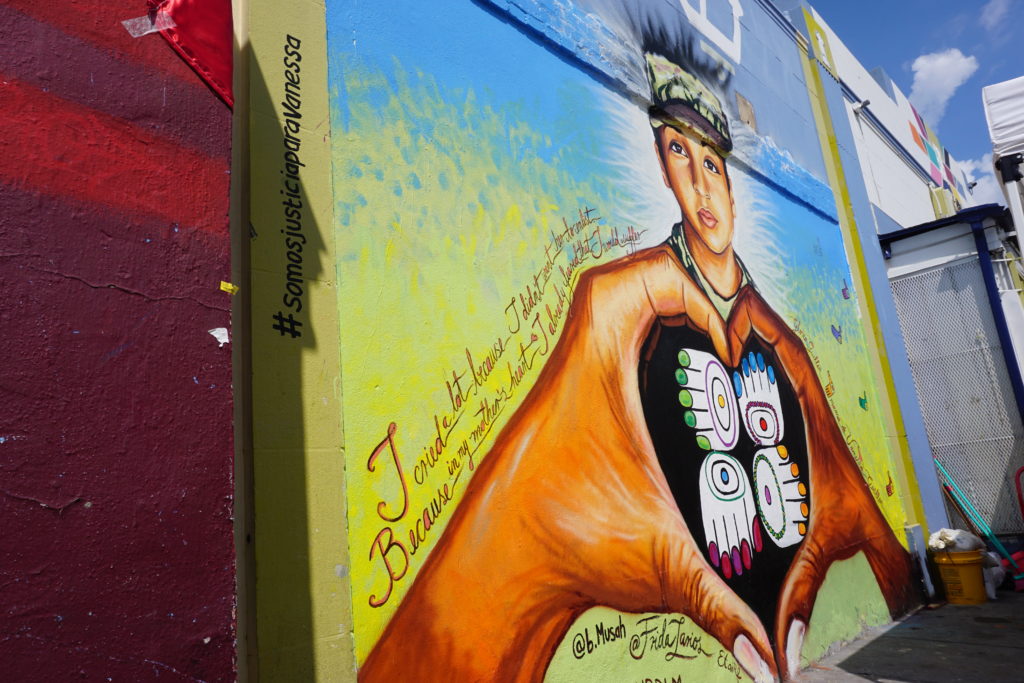
After setting up the Zoom call, Artist Musah Swallah greets me with an energetic “Good Morning” before we pause to wait for Artist Frida Larios.
This interview has been edited for length and clarity.
On how they came across the Vanessa Guillén mural project.
Frida Larios: We activated for the Black Lives Matter protests and we organically created this love sign—visual symbology that intends to represent or integrate Indigenous, Latino, and Black communities using art as a model. Jackie Reyes, who is the Director of the Office of Latino Affairs for the Mayor (she is from El Salvador), posted something on Facebook. I mean we were all shocked by the news and [that], at that moment, they couldn’t find Vanessa. There were no clues, so [Jackie] was very shocked by that. And her post on facebook said, “We need to do something in Washington [DC] for Vanessa. This is tragic; this is terrible.” And it was a really moving call to action. So she asked, “Where are the activists? Where are the muralists? We have to do a mural.” This was something she posted as a personal call. It’s not related to the mayor at all. Or official work. This was a personal feeling from her.
Frida goes on to describe how she reached out to Jackie to collaborate on a mural. Jackie responded that there was no space at that time for a mural but kept the idea in mind as actions around the Guillén story unfolded.
Frida Larios: As artists sometimes you are just a bridge of messages, but of course, in our work, we also try to carry our own values through. So we would never work on something that we don’t feel fulfills our purpose as human beings.
Musah Swallah: The first time I heard about Vanessa’s story, my wife Fatoumata, she woke up in the middle of the night and she started crying. I was kind of confused and I was trying to figure out what the problem was. She said that she read [Guillén’s] story in the news [and that she could relate to her story].
On how a story from Texas relates to the community of Columbia Heights, Black Lives Matter, and what it means to the artists.
Frida Larios: In Indigenous cultures there is this concept of reciprocity. We came together for Black Lives Matter because we identify with our own cultures. It is a sign of solidarity and reciprocity.
Musah Swallah: For me, I always say that art is a very powerful tool that we use in terms of communication with people. I keep on saying, “people have different ways of protesting. And we as artists, the only way we can also share our view or our protest is by painting murals so that people around can also see and feel the work artists put in to create a mural and how artists feel concerned in communities.
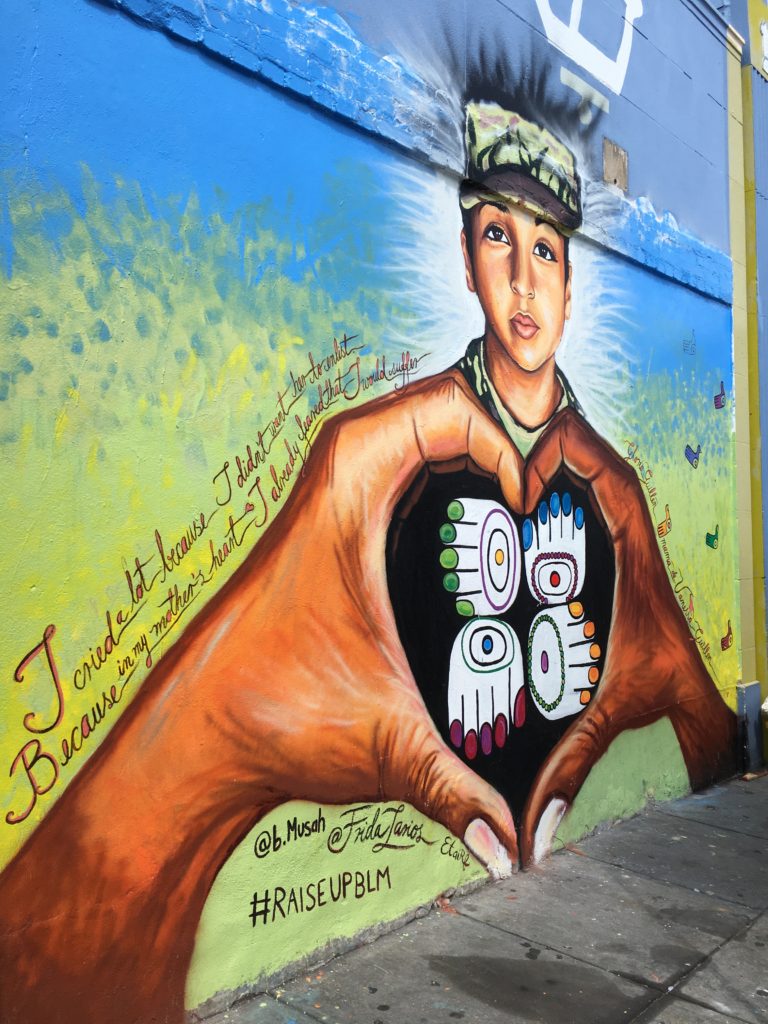
After mentioning that a lot of artists in the community are painting murals to raise awareness about social issues, Musah takes a minute to share that he used his own paint and materials for the Guillén mural as a way of giving his voice to the two movements (Black Lives Matter and Justice for Vanessa Guillén).
On whether they intended for the mural to act as a memorial space for Vanessa Guillén.
Frida says it was quite intentional. The community came together to use the space for a continuation of a “vigil [taking place]at the Columbia Heights Plaza.” She invited community organizers* (see credit below [Azul Torres and Romina Martin]) to the mural as the finishing of the art ran “parallel to the event.”
Frida Larios: We came together with the community at the vigil to create an altar and brought other offerings (ofrendas) as tribute to Vanessa’s life.
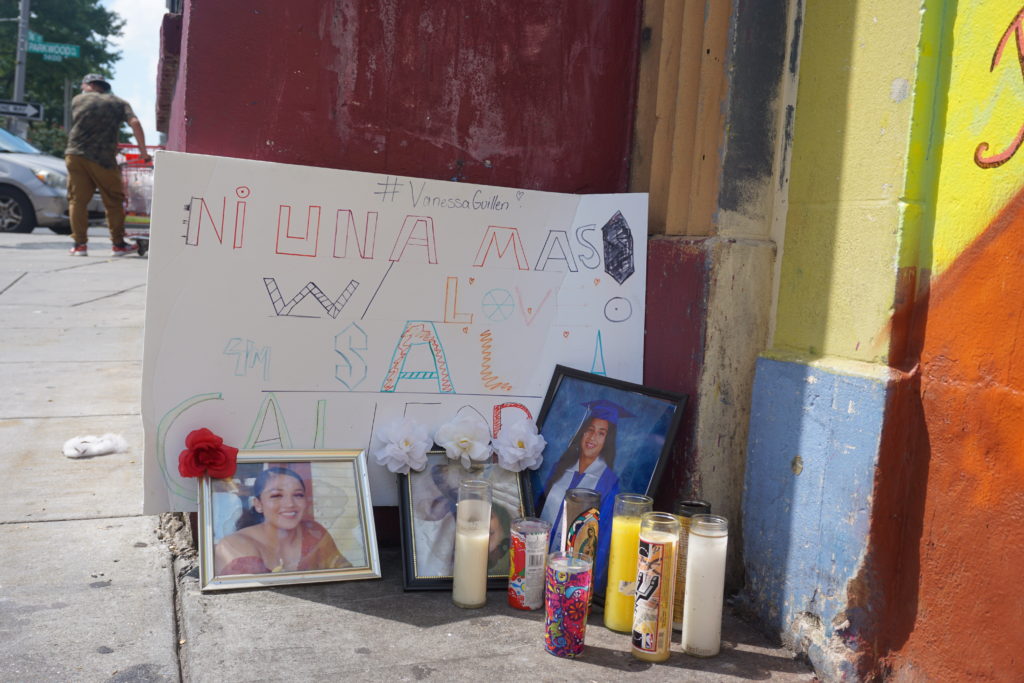
Can you tell us more about the symbols in the mural?
Musah Swallah: With the hands. It represents love, togetherness, supporting of each other, one way or the other. It also represents Black Lives Matter—that our life is valued as human beings. And we also need to be treated equal to any other race. There is the sign of the hand, the love sign to show each and everyone respect. That is one of the symbols we have been using most in murals. You can also find one on El Tamarindo in Adams Morgan.
Frida Larios: The 4 hands in the middle of the love sign mean and repeat 4 times: K’AL = raise-up in Maya hieroglyphics. Hence hashtag #RaiseUpBLM.
On the quote included in the mural from Vanessa’s mother, “I cried a lot because I didn’t want her to enlist. Because in my mother’s heart I already feared that I would suffer.”
Frida Larios: It really represents the sorrow and the grieving from a mother. From a military mother. As an immigrant, it just adds another layer of difficult-ness and that was felt through the mother who gave testimony at the event. We felt that it was important to leave those words there because we knew it was permanent. People wait for transportation in front of Panam, to take their groceries home, and it is a space where people stop so it was relevant.
The mural on Panam International offers passerby the feeling that Vanessa Guillén is watching over the community in Columbia Heights. That her story brings together the movement for justice not only for Vanessa Guillen’s family but for immigrants and for Black Lives.
On how the community can support their work.
Since the image is about togetherness in the struggle; I wanted to finish the interview by checking in with both artists to see how readers could help support their work.
Musah Swallah: I am doing quite well. I’m also taking advantage of Zoom and teaching on Zoom. I have been teaching kids how to paint and draw. I have been calling my family in Ghana to check in on them. It’s a hard time living in 2020 but hopefully things will get back to normal. But right now, everything’s fine.
Frida Larios: I’ve also been teaching kids with Musah too. My children have been participating in a little bit of the paintings. That has helped also trying to bring them into another space that is not our house. It’s been hard to stay safe and at the same time stay active. And also having family in El Salvador, my family, my community in El Salvador had a hurricane in the middle of the pandemic. So, people lost houses. It’s like you live two parallels. We just think about here and very connected to our roots down there.
Frida and Musah wanted to recognize the following individuals/businesses for their assistance in bringing the mural to Columbia Heights:
- Jackie Reyes, Fiesta DC festival founder and community organizer. Mural initiative.
- Maria Patricia Corrales Peñapiel, Fiesta DC community organizer and mural materials’ donation.
- Etai Rogers-Fett (they/them, Ashkenazi Jewish, UDC artist): Assistant muralist. She read to us the upper baby blue part of the mural that was already there. It reads: Peace.*
- Azul Torres (Mexico-El Salvador, AU Senior): Columbia Heights community co-leader.
- Romina Martin (Perú, AU alum Class of 2020): community co-leader.
- Jayerr Carask (Aymara, Quechua): BLM volunteer, Columbia Heights community, altar co-creator and roses for community contributor.
- Toñita Corea (El Salvador): Columbia Heights community, altar co-creator and contributor.
- She Loves Me, (Petworth flower designers): Cempasúchiles (Sempuashuchit, orange flowers that guide our ancestors’ spirits in the underworld ) crown creator and Cempasúchiles (Marigolds) for community contributor.
- Uri Gramaje, Panam Supermarket 14th Street, manager.
Want to see more of the artists? They are participating in the Adam’s Morgan Day Festival on the 13th of September and will be at the El Tamarindo mural talking about the piece. They are looking for a space to create a mural that day. They are working with United We Dream to find a space to create a mural centering on youth voices.
